Easy Button
I love the TV spot featuring the “Easy Button”. Who wouldn’t want one of those? It would be used nearly constantly these days – I want Easy Buttons for work, money, music, movies, food, beer, and the !@#$% cable remote.
Dream on. The more companies CAN do, they WILL do, making product choices – not to mention user interfaces – infuriatingly complex. Why? Nobody (except maybe Apple) seems to consider simplicity. The number of decisions we face every day turns the multiple choices demanded by an overly-complex product into Way Too Many.
I think that’s why some of us gravitate toward the Big Acoustic Easy Button: put a bunch of absorbers on the walls and ceiling, it’ll be OK. There, that was easy, now make some sound.
Sad to say, effective acoustic treatment doesn’t work that way. The best sounding spaces have the right combination of absorption AND diffusion. To make matters more complicated, diffusion is not as well-understood as absorption, so it seems more difficult to make choices.
That’s why we’ve tried to make Acoustic Geometry products easier to use – they’re not yet the Easy Button, but getting closer. We’re working on guides showing the best combinations of diffusors and absorbers for a variety of applications and acoustic spaces. Our current SketchUp Room Guides are a start, with more on the way.
John Calder
Contact me: [email protected]











2 comments on “Easy Button”
Troy Esposito
How about a general layout for people with dipolar/planer speakers like Magnepan & Martin Logan? I see a lot of rooms set similar to mine, on the forums. Rectangular, with the rear wave firing into the corners. Speakers are into the room about 3-4 ft.
I plan to start out first with your corner diffusor/absorber, then work my way out to the side and rear walls with the medium, and large diffusors. I think a general layout for planer speakers would be very useful for audiophiles like me. As they use the rooms acoustics more, to get great sound.
John Calder
Hi Troy,
Thanks for your post! I agree with you about dipole speakers “using” the room more than “standard” speakers. For years I’ve felt that true omni-directional speakers in a nicely-diffuse room would be ideal, but true omnis are extremely difficult to design and build.
I’m a bit of a sterophile heretic – I strongly believe the best starting placement for diffusors is the left-right first-reflection points (where most people place absorption panels), even for dipole and omni speakers, and especially for primarily unidirectional speakers. It’s all about the roll of coherent phase in the stereo image, at which our Curve diffusors excel.
I think a “dipole room” example would be a great idea, and I’ll put it on my list of to-do SketchUp designs. Proper diffusion will work regardless of the dispersion pattern of your speakers, and the right diffusors have drastically improved listening and monitoring rooms for decades.
I’d encourage you to experiment with Curve diffusor placement – alternate between the first-reflection points and the corner placement, and let us know what you hear. It’s always wonderful to ‘diffuse’ the collective knowledge of people who can hear well.
Thanks again and best wishes,
John Calder